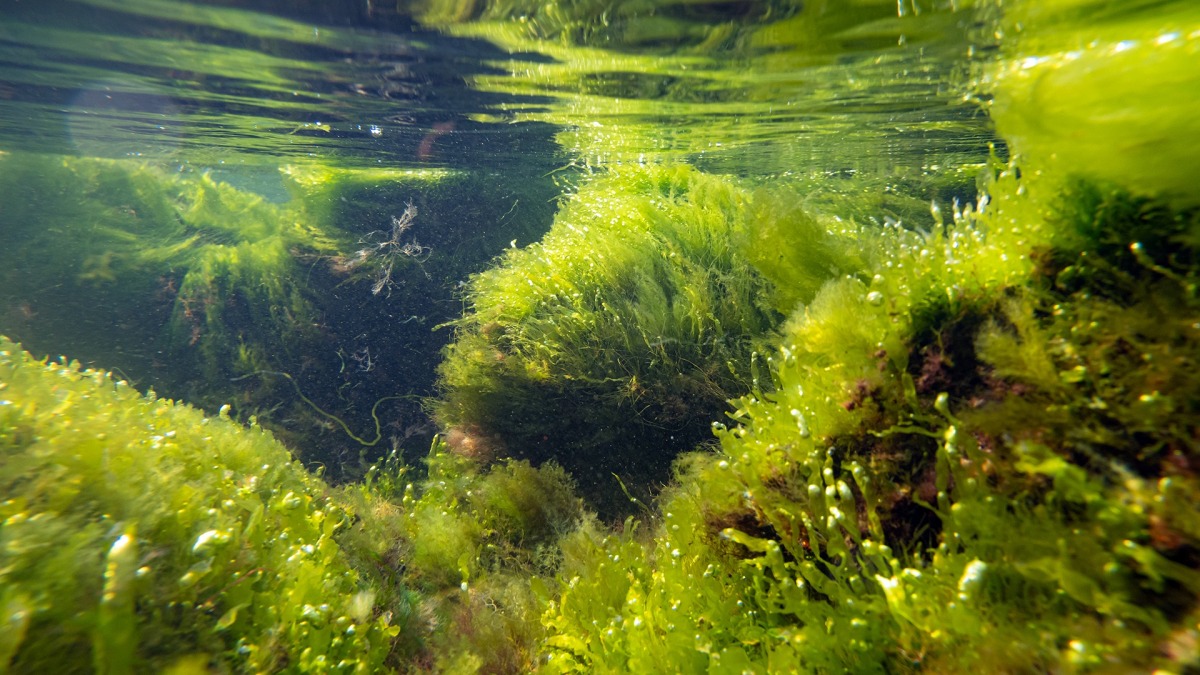Chorhun river (Chorna), Crimea, Ukraine
Spot near Chornorichia village
1. Natural biotope description
Chorhun is a river in the southwest of the Crimean Peninsula, it originates in the Baydar Valley and flows into the Sevastopol Bay in the city of Sevastopol. The length of the river is 41 km, in the Baydar valley there is the Chorhun reservoir on the river, then it flows through the Chornorichenskyy canyon and into the Black Sea in the Inkerman district of Sevastopol.
It is the second full-water river of the peninsula. The nature of the river changes from a rapid mountain stream in the upper part and in the canyon to a wide, slow, full-water river in the Inkerman part before the estuary. It is high-water in the winter-spring period, low-water in the summer-autumn period. In recent years the river has suffered extremely low water in the summer, and in 2021 it even dried up in some places.
The river is located in the subtropical climate zone, but its water is always cold because of the mountainous relief and fast flow. Water temperature doesn’t rise above 15 °C in summer, in cold winters water surface is covered with a thin layer of ice. In the springtime and after heavy summer rainfalls there are floods when its waters become murky and extremely dangerous.
Chorhun river flows in the Crimean Mountains, its underwater landscape is typical for mountain rivers: bottom in different areas is covered with rough sand and silt, different sized pebbles and stones; driftwood, leaf litter and sediments are carried with strong water flow and are always changing the underwater landscapes.
The area around the river is covered with different trees and bushes, there are popular hiking routes on its banks. This area is heavily polluted with garbage.
Before russian occupants’ interference the river was very rich in aquatic flora and fauna. Now only the hardiest species survive there.
For my biotope aquarium I chose the section in the middle course of the river (GPS coordinates 44.542954, 33.662526) just after the aqueduct Chornorichia. This spot is located on the border of the Aqyar city (russian: Sevastopol) and symbolizes the fragile edge between wildlife and russian destruction of it.
But what makes it special and similar to the British chalk streams is the presence of chalk bedrock. This rock positively influences the variety of the aquatic plants and significantly contributes to their growth (especially to pondweed). And this nuance brought me to the UKAPS forum, where I tried to find any experience info on setting up and keeping a chalkwater biotope aquarium. Unfortunately, I am the first biotoper to gain this kind of experience.
Chorhun river water chemical parameters
pH: 7.8; gH: 11 mg/l; kH: 8 mg/l
PLANTS:
| Latin name | Family | Common name |
| Myriophyllum spicatum L | Haloragaceae | spiked watermilfoil |
| Stuckenia pectinata | Potamogetonaceae | sago pondweed |
| Potamogeton natans | Potamogetonaceae | floating pondweed |
| Potamogeton nodosus | Potamogetonaceae | longleaf pondweed |
| Ceratophyllum demersum | Ceratophyllaceae | hornwort |
| Elodea canadensis | Hydrocharitaceae | Canadian waterweed |
| Nuphar lutea | Nymphaeaceae | yellow water-lily |
| Najas marina | Hydrocharitaceae | spiny naiad |
| Lemna gibba | Araceae | fat duckweed |
| Ranunculus sceleratus | Ranunculaceae | celery-leaved buttercup |
| Mentha aquatica | Lamiaceae | water mint |
| Berula erecta | Apiaceae | cutleaf waterparsnip |
| Carex pendula | Cyperaceae | weeping sedge |
| Schoenoplectus lacustris | Cyperaceae | lakeshore bulrush |
| Typha latifolia | Typhaceae | broadleaf cattail |
| Equisetum telmateia | Equisetaceae | great horsetail |
| Salix alba L | Salicaceae | white willow |
| Alnus glutinosa | Betulaceae | black alder |
| Persicaria maculosa | Polygonaceae | lady's thumb |
| Hydrocharis morsus-ranae | Hydrocharitaceae | European frog-bit |
FISH:
| Latin name | Family | Common name |
| Leucaspius delineates | Cyprinidae | sunbleak |
| Rhodeus amarus | Cyprinidae | European bitterling |
| Gobio gobio | Cyprinidae | gudgeon |
| Gymnocephalus cernuus | Percidae | Eurasian ruffe |
| Rutilus rutilus | Cyprinidae | common roach |
| Perca fluviatilis | Percidae | common perch |
| Carassius gibelio | Cyprinidae | Gibel carp |
| Cobitis taenia | Cobitidae | spined loach |
| Unio pictorum | Unionidae | painter's mussel |
| Planorbarius corneus | Planorbidae | great ramshorn |
Both lists are far from complete as the nature of the biotope section was very rich.
Ecological problems
The river Chorhun is on the verge of ecological disaster. Its water is now maximally used by the russian military fleet, which is based in Sevastopol. Because of this, it became very shallow, and last year it even dried up in several places. In the lower reaches of the Chorhun River, the waters are heavily polluted with oil waste and sewage waste from the russian military base.
Protection of the nature of Crimea is a huge environmental problem. After the illegal occupation of the peninsula by the russian federation, the russians made it their military base. They do not care about ecology at all, they keep destroying unique biotopes when they take water for the needs of their army (yes, not for the local population, but for the russian army).
Photos for this post:
Flickr: Explore everyone's photos on a Map
British chalk streams:
Chalk stream - Wikipedia
My biotope description to Heiko Bleher’s Biotope Aquarium Contest 2022 (censored by the BAP):
Chorhun river (Chorna), Crimea – BAP
HOW TO CENSOR THE BAC 2022 ENTRY AND DISCREDIT THE CONTEST





